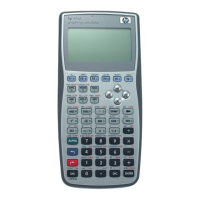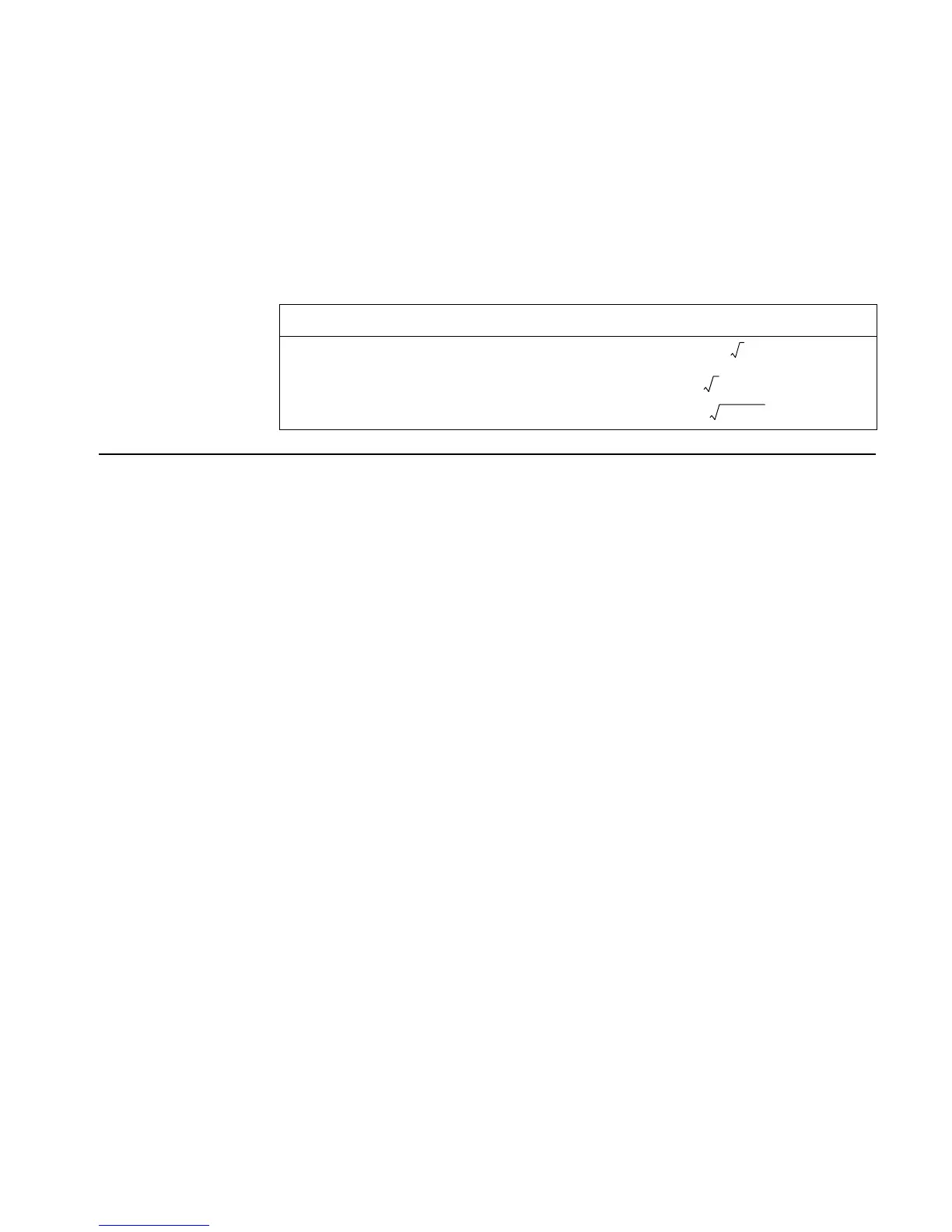Full Command and Function Reference 3-211
These graphs show the inverse relation 's1*√Z' for the case s1=1. For the other value of s1, the
half-plane in the lower graph is rotated. Taken together, the half-planes cover the whole complex
plane, which is the domain of SQ.
View these graphs with domain and range reversed to see how the domain of SQ is restricted to
make an inverse function possible. Consider the half-plane in the lower graph as the restricted
domain Z = (x, y). SQ sends this domain onto the whole complex plane in the range W = (u, v)
= SQ(x, y) in the upper graph.
Access: R
Flags: Principal Solution (-1), Numerical Results (-3)
Input/Output:
Level 1/Argument 1 Level 1/Item 1
z
→
z
x_unit
→
xunit
12
'symb'
→
'
symb()
'
See also: SQ, ^, ISOL
∫ (Integrate)
Type: Function
Description: Integral Function: Integrates an integrand from lower limit to upper limit with respect to a specified
variable of integration.
The algebraic syntax for ∫ parallels its stack syntax:
∫ (lower limit, upper limit, integrand, name)
where lower limit, upper limit, and integrand can be real or complex numbers, unit objects, names, or
algebraic expressions.
Evaluating ∫ in Symbolic Results mode (flag –3 clear) returns a symbolic result. Some functions
that the hp49g+/hp48gII can integrate include the following:
• All built-in functions whose antiderivatives can be expressed in terms of other built-in
functions—for example, SIN can be integrated since its antiderivative, COS, is a built-in
function. The arguments for these functions must be linear.
• Sums, differences, and negations of built-in functions whose antiderivatives can be expressed
in terms of other built-in functions—for example,
'SIN(X)–COS(X)'.
• Derivatives of all built-in functions—for example, 'INV(1+X^2)' can be integrated because it
is the derivative of the built-in function ATAN.
• Polynomials whose base term is linear—for example, 'X^3+X^2–2*X+6' can be integrated
since X is a linear term.
'(X^2–6)^3+(X^2–6)^2' cannot be integrated since X^2–6 is not
linear.
• Selected patterns composed of functions whose antiderivatives can be expressed in terms of
other built-in functions—for example,
'1/(COS(X)*SIN(X))' returns 'LN(TAN(X))'.
If the result of the integration is an expression with no integral sign in the result, the symbolic
integration was successful. If, however, the result still contains an integral sign, try rearranging
the expression and evaluating again, or estimate the answer using numerical integration.
Evaluating ∫ in Numerical Results mode (flag –3 set) returns a numerical approximation, and
stores the error of integration in variable IERR. ∫ consults the number format setting to
determine how accurately to compute the result.
Access: …Á (Á is the right-shift of the Ukey).
Flags: Numerical Result (-3), Number Format (-45 to -50)

